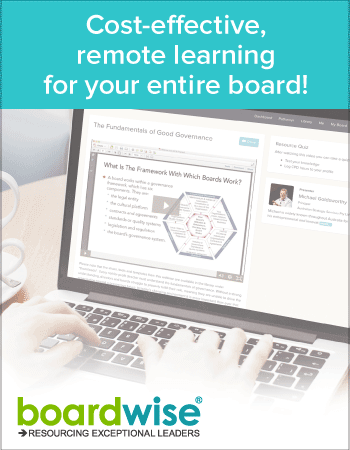strategy-risk
Why Succession Planning Should Be Your Board's Superpower
Published: November 8, 2025
Read Time: 5 minutes

Leadership transitions–whether of the CEO or chair–can have a profound impact on an organisation.
Poorly managed transitions may lead to strategic drift, cultural misalignment, and loss of confidence. Effective transitions, however, support strategic momentum, strengthen leadership teams, and reinforce values.
Succession planning, therefore is not just an operational task — it is a critical strategic responsibility of the board.
Elements to consider:
1. Aligning leadership transitions with organisational values
Organisational values are the foundation of culture and decision-making. Transitions that ignore these values send the wrong message: that acting outside these principles is acceptable and carries no consequences.
When leaders are selected based on alignment with values such as transparency, inclusion, or accountability, they build credibility and foster a culture that reflects those principles across all levels. This alignment empowers senior leaders to reinforce accountability and contributes to a values-driven organisation.
Value-aligned transitions also minimise friction between new leaders and existing teams, encouraging quicker integration and cooperation. Promoting internal candidates sends a strong message about the organisation’s commitment to professional development and retention, and can energise staff morale.
2. Aligning leadership transitions with strategic goals
The suitability of a new leader (CEO or chair) should be assessed through the lens of the organisation’s strategic priorities. What are the key objectives? What skills and experiences are required to meet them?
It’s important to recognise that the skills needed for a CEO are not the same as those for a chair. The CEO must lead operations, while the chair leads the board in fulfilling its governance role. Succession planning should account for this distinction and ensure alignment between leadership capabilities and strategic direction.
3. Key risks when leadership succession planning is not effectively undertaken
Boards that fail to plan for leadership transitions expose their organisation to unnecessary risks. These include:
-
Cultural misalignment: Leaders who don’t reflect the organisation’s values can cause disruption, internal conflict, and staff turnover.
-
Strategic disconnection: If the incoming leader’s experience doesn’t align with strategic priorities, progress may stall.
-
Loss of internal talent: Ignoring qualified internal candidates can cause disengagement among board members or staff.
-
Delays and confusion: Without an established plan, leadership changes become reactive, slow, and chaotic.
-
Reputational damage: Poorly handled announcements and abrupt transitions can harm external relationships.
-
Leadership friction: A mismatched chair-CEO partnership can hinder decision- making.
-
Knowledge loss: Lack of a proper handover can interrupt continuity and weaken strategic focus.
Succession planning mitigates these risks by providing clarity, structure, and foresight.
4. Best Practice Succession Planning
Succession planning should be a regular and deliberate item on the board’s agenda. It should be integrated with annual reviews and aligned with strategic and cultural goals.
Here’s how best to approach it for both CEO and chair transitions.
CEO Succession Planning
The board must determine the skills and experience the next CEO needs to lead the organisation toward its strategic goals. This process should include input from the current CEO and leadership team to ensure a well-rounded view of future needs.
Key actions include:
- Internal talent review: Identify and support promising internal candidates.
- Clarity on internal vs external: Establish a fair process for assessing all candidates.
- Cultural fit: Ensure alignment with organisational values and work culture.
- Use of search firms: Consider engaging external experts to benchmark and evaluate candidates.
- Structured onboarding: Develop a comprehensive induction process to accelerate performance and cultural integration.
- Clear expectations: Define success with measurable goals linked to strategy.
- Ongoing support: Facilitate regular engagement and feedback between the chair, board, and CEO.
- Communication strategy: Have a clear internal and external plan to communicate leadership transitions and ensure stakeholder confidence.
CEO succession is not a one-off event, it’s an ongoing responsibility that supports long- term organisational success.
Chair Succession Planning
A strong chair supports effective governance, fosters board cohesion, and aligns with strategic objectives. The ideal chair will vary depending on the board’s culture, the organisation’s maturity, and current challenges and opportunities.
Key steps include:
- Evaluation process: Conduct a thorough board evaluation to identify what leadership skills and experiences are needed in the next chair.
- Strategic alignment: The new chair must understand and support the organisation’s direction and strategy.
- Role clarity: Clearly define responsibilities of the chair, directors, and CEO to avoid role confusion.
- Transition overlap: When possible, allow for a handover period to ensure continuity and stability.
- Governance knowledge: Chairs must understand regulatory responsibilities and be capable of managing board dynamics constructively.
- Balanced board renewal: Balance fresh perspectives with the retention of institutional knowledge.
- Ongoing development: Consider coaching or governance education to support the new chair in their transition.
- Performance review: Integrate chair effectiveness into annual board performance assessments.
Long-term governance planning should incorporate chair succession to avoid reactive decision-making and ensure strategic and cultural alignment.
Conclusion
Succession planning isn’t about reacting to vacancies, it’s about proactively shaping the leadership that will drive your mission forward. When boards take a strategic, values-aligned, and forward-looking approach to succession, they don’t just fill roles, they build resilience, continuity, and confidence.
Make succession planning your board’s superpower.
This article was first published in the 2025 Better Boards Conference Magazine.
Further Reading
Four Types of Problem Solvers – Who Is On Your Board?
Hire, Review and Fire: The CEO Lifecycle
Leadership Succession Management as an Ongoing Governance Discipline
Share this Article
Recommended Reading
Recommended Viewing
Author
-
Managing Director
Govern for Purpose
- About
-
Melissa is a specialist governance advisor working with Boards and Directors on governance performance improvement for for-purpose organisations. Melissa brings her cross-sector knowledge and expertise to support Boards to consolidate their foundation and purpose, align stakeholders, and improve their risk management and governance practices. Melissa has a depth and breadth of sector knowledge having worked with close to 100 organisations across diverse cause areas, large and small, on improving leadership and governance across strategy, risk, purpose, impact and processes. Melissa is well respected for her blend of energy, passion and ability and regularly presents on aligning people and purpose, and good governance. Melissa has presented for Better Boards Australasia, Australian Institute of Company Directors, Philanthropy Australia, and Third Sector People to name a few.
Found this article useful or informative?
Join 5,000+ not-for-profit & for-purpose directors receiving the latest insights on governance and leadership.
Receive a free e-book on improving your board decisions when you subscribe.
Unsubscribe anytime. We care about your privacy - read our Privacy Policy .









